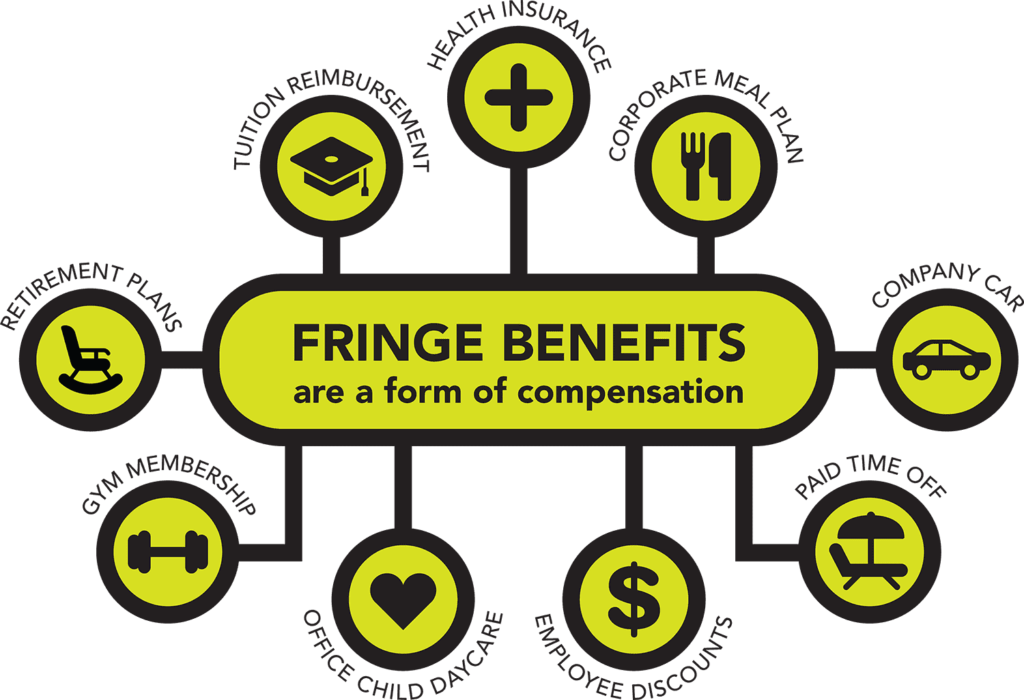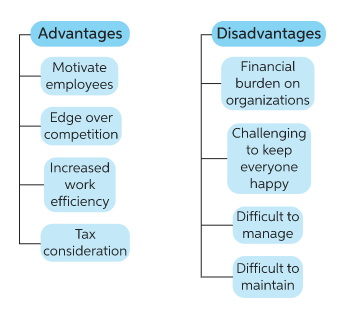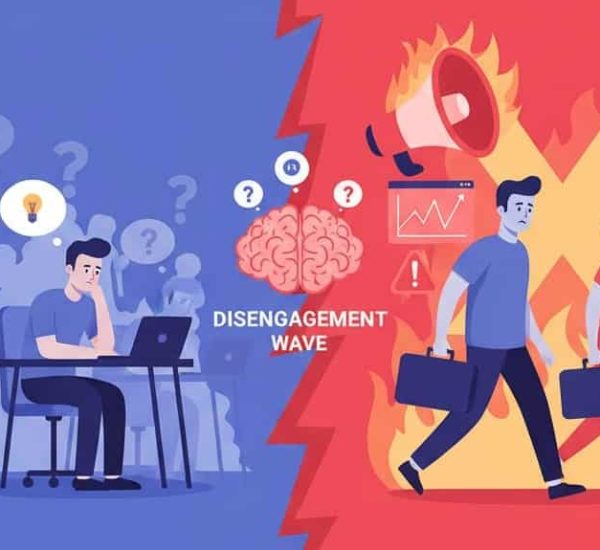Companies, big or small, always seek employees that are best suited to the organization and ensure the company achieves its goals in the most effective manner. Moreover, employers have realized that employees are their most significant asset, and they must treat them in such a way that employees feel a sense of belonging.
Apart from offering them a salary that is at par with their efforts, employers make sure that they mitigate employee turnover and keep their employees happy through a host of other benefits.
In this blog, we’ll take you through the fringe benefits that can be offered to employees and how they’re taxed.
What are Fringe Benefits?
Fringe benefits are the additional non-monetary benefits that a company provides to its employees over and above their regular salary. For example, a company can offer medical insurance to an employee. The employee can use it in case of a medical emergency.
Subsequently, for all intents and purposes, employee benefits and fringe benefits are used interchangeably.
Most companies use these benefits to ensure the employees stay motivated. Furthermore, job seekers also compare various companies based on the offered fringe benefits while applying to different companies.
Fringe Benefit Examples
Fringe benefits examples may differ depending on the type of company, its employees, type of business, and other parameters. Additionally, the most common fringe benefits examples are:
- Medical Insurance Plans
- Retirement Plans
- Meal Vouchers
- Workers’ Compensation Plans
- Paid Time Off
Furthermore, some companies may also offer more uncommon benefits as fringe benefits such as:
- Company Sponsored Vacations
- Company Car
- Subsidies
Most companies list the fringe benefits available in the job descriptions themselves. But companies may also provide a cafeteria-style benefits choice, where employees choose the benefits that work for them.

How are Fringe Benefits Taxed?
The IRS considers the IRS fringe benefits as perks given by the employers to the employees and has made relevant policies for fringe benefits tax unless they fall under the specific list of tax excluded items.
However, the IRS mandates that companies include the taxable fringe benefits under employees’ W-2.
Taxable Fringe Benefits
- Mileage expenses, exceeding the permissible limit
- Relocation expenses if the employee is moving less than 50 miles away
- Tuition or education expenses not related to the employee’s job
- Working conditions benefit, such as a company car, if used for personal purposes
- Gym memberships
- Income from non-statutory stock options
- Income from the vesting of restricted stock
- Housing Expenses
- Reimbursement for any development unrelated to work
- Travel expenses unrelated to business
- Group term insurance exceeding $50,000 of sum assured
- Cash or non-cash benefits as rewards, unless nominal in value or given to charity
Non-Taxable Fringe Benefits
The IRS does not levy tax on some benefits. Here are the most common non-taxable fringe benefits examples:
- Accident and disability insurance benefits
- Achievement awards up to $1600
- Adoption assistance
- Educational Assistance up to an annual limit of $5,250
- Dependent care assistance up to $5,000
- Medical insurance plans
- Athletic facilities on-premise
- Retirement planning services
- Lodging or meals related to job
- Employee discounts
- Commuter benefits
- No additional cost services
Non-Employee Fringe Benefits
In the process of answering the question of how fringe benefits are taxes, non-employees play a crucial role. Although the IRS has specifically listed the taxable and non-taxable fringe benefits, most or all of the fringe benefits may fall in the category of non-taxable if the employer provides the fringe benefits to a non-employee.
If the recipient of a taxable fringe benefit isn’t your employee, the benefit isn’t subject to employment taxes. However, you may have to report the benefit on one of the following information returns:
- If the non-employee is a partner, the company must add the fringe benefits into Schedule K-1
- If the non-employee is an independent contractor, the company must include the fringe benefits on Form 1099-MISC
Non-Employee Classification
We’ve all heard of the term employees but who is a non-employee?
There are specific criteria that an individual must fulfill to be recognized by the company and the IRS as a non-employee. The criteria are as follows:
- The individual must hold more than 2% of the company stock in an S-corporation (S-2%).
- The individual must be a highly compensated employee (HCE)
- who could either be a shareholder, owning more than 5% of the voting power
- an officer
- HCE based on circumstances
- the HCE’s spouse/dependent.
- The individual must be an HCE among the five highest-paid officers or 25% of the highest-paid employees. Furthermore, the individual must own 10% of the total employer’s stock.
- The individual must be an HCE who has received more than $150,000 as salary for the previous year or owns more than 5% of the company at any time during the current or the previous year.
- An individual who is 1% owner of the business with annual pay of more than $150,000 or owns 5% of the business as an officer with annual pay of $185,000.
How do Employers Track Fringe Benefits?
Companies with many employees who are provided IRS fringe benefits can face issues in keeping tabs on the expenses and reimbursements. Employees too can find it troublesome to know on what benefits they must pay taxes.
In this case, employers can use a policy document called an Accountable Plan.
An accountable plan is a chart that defines the reimbursement provided by the company to the employees and their taxability status. It serves as a guide where the company records the fringe benefits provided to the employees.
Does the IRS need an Accountable Plan?
According to the IRS Publication 15 (Circular E), Employer’s Tax Guide, companies can exclude expense reimbursements from an employee’s wages if the business has an “accountable” plan.
An accountable plan has no legal value, and thus, the IRS does not demand that a company submit it with them. However, an accountable plan can prove to be a vital document to ensure that a company complies with the tax laws and IRS regulations.
Furthermore, it also allows the employees to mitigate the event of paying unnecessary taxes on the non-taxable fringe benefits. Thus, the IRS suggests that a company must have an accountable plan to reimburse their employees and successfully and ensure non-taxable benefits.
For a company to have an accountable plan, the reimbursement policy should meet the following three requirements:
Returning Excess Amounts
If employers mistakenly reimburse the employees an extra amount, the employees must return the excess amount as soon as possible.
Clear Business Connection
The expenses incurred by the employees must correlate with an event connected to the business.
Substantiation
The employees must provide valid proof of the business expenses incurred in the form of receipts, amount, time, and purpose.
In case a company does not have an accountable plan in place, IRS Publication 15 states that “The IRS will treat the payments to your employee for travel and other necessary expenses of your business under a nonaccountable plan are wage as supplemental wages. These are subject to the withholding and payment of income, social security, Medicare, and FUTA taxes.”
Tax Advanced Benefits of Fringe Benefits
Tax advanced benefits are unique benefits that a company can provide to their employees to lower their taxable income effectively. These types of benefits create monetary savings for both the company and the employees. Under the feature of advanced tax benefits, the company uses their pre-tax dollars to pay for the non-taxable benefit they provided to the employees who have already paid for it with their post-tax salary.
Although the process seems a little complicated, it helps hugely as afterward, it results in fringe benefits deducted from the paycheck of the employee and presents it as a tax deduction.
Section 125 Cafeteria Plan: The Flexibility in Fringe Benefits
In a company’s quest to offer its employees an ideal work environment, a cafeteria plan is the most flexible way for offering IRS fringe benefits. Under the cafeteria plan, the employees can choose the fringe benefits as per their tax liability. The plans offer these benefits as pre-tax deductions to reduce the employee’s taxable income.
For instance, under the cafeteria plan, the company can choose between medical insurance and mileage expenses. If the employee chooses the medical insurance and decides to contribute $50 towards the premium, the company cuts the $50 from the employee’s paycheck, reducing the taxable income by $50.
The list of benefits that the company can include in cafeteria plans comes from the IRS’s list of non-taxable benefits, along with the flexible spending accounts (FSAs). Additionally, the list is of fringe benefit examples that a company can add to the plan are:
- Adoption Assistance
- Accidental and Medical Benefits
- Dependent Care Assistance
- Group Life Insurance Coverage
- Health Savings Account (HSAs)
Companies can not include the following fringe benefits in their cafeteria plan made under section 125:
- Working Conditions Benefit
- Archer Medical Savings Account
- Tuition Reduction
- Commuting Benefits
- Retirement Planning Benefits
- Athletic Facilities
- De Minimis (Minimal) Benefits
- Educational Assistance
- Employee Discounts
- No-additional Cost Services
- Meal Expenses
- Lodging on Company Premises
- Employer-Provided Cell Phones
We’ve gone into more detail about cafeteria-style flex benefits here.
Impact of Fringe Benefits on Businesses
Anyone without deep knowledge of organizational operations and leadership would think that providing fringe benefits can prove to be a financial burden for the company. While the financial aspect is true, as the companies must incur the costs related to the fringe benefits, the return they get against paying for them is fundamental to the growth of their business.
Furthermore, there are numerous advantages of fringe benefits to the employees. Employers use fringe benefits for the personal development of the employees and ensure the company nurtures:
Motivated Employees
Fringe benefits motivate employees as they know that the company cares for them. As the benefits are over and above the regular salary, employees stay motivated to help the company grow. Moreover, they do not want employers to think less of them and feel that they should prove themselves.
Employee Loyalty
Fringe benefits drive employee loyalty at the workplace. When employees know that the company is spending more to improve their standard of living, they become loyal to the company and try to do everything possible to contribute to its success. The employees get attached to the company, its ways and contribute to its growth.
Minimum Employee Turnover
Although fringe benefits are a small part of an employee’s contribution, if they’re done right they can account for a lot more. For instance, in companies like Google benefits like free meals, nap pods, and free childcare can go a long way to improve employee engagement.
When employees are satisfied with what they do and the benefits they recieve, they don’t feel the need to leave the company for a new one. Furthermore, the company has to spend fewer resources in finding a replacement for exiting employees.
Ideal Employees
Most companies provide education support to the employees, ensuring that they learn new skills related to their work. In the long run, through these, companies ensure that they employ a class of employees who are skilled and hungry to improve their skill set. Subsequently, these employees contribute a lot more to a company’s success.
Positive Goodwill
With loyal, satisfied employees come loyal, satisfied customers. When every employee looks to grow the business by all possible means, the company can better serve the customers and ensure brand advocacy. Moreover, through positive word of mouth of employees and customers, the company’s goodwill increases, increasing business and profits.

Fringe Benefits are Here to Stay
A company is only as good as its employees. Employees are the people who work hard, execute company policies and serve the customers. Thus, a company must do everything in its power to create a positive work environment for employees. As long as employees are satisfied, the company will grow and find success.
IRS fringe benefits are the ideal instruments that a company can use to ensure their employees feel cared for personally and professionally. Thus, HR can create a comprehensive fringe benefit policy for the employees, detailed accountability, and a cafeteria plan.
The policy will allow for greater flexibility for the employees and transparency for the business if the company gets audited. Since numerous studies have shown how companies that offer fringe benefits better achieve their goals, companies should include them to utilize their greatest asset: their employees.




